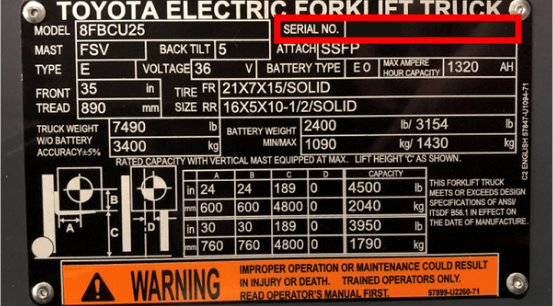Anticipating Hazards For Loading And Unloading Trailers Safely
The use of forklifts in shipping and receiving increases productivity and efficiency. Because this is a common practice throughout many industries, drivers, forklift operators, and other associates might skip important safety precautions in pursuit of efficiency. It’s important to remember how much heavy equipment is involved in the loading and unloading process. The maximum legal weight of a loaded semi-truck and trailer can be 80,000 lbs. distributed across 18 wheels. Forklifts have varying weights, but driving into a trailer can easily add a 9,000 lb. weight onto the floor. Not to mention what loads of pallet materials weigh.
In the middle of all this heavy machinery are operators and drivers tasked with moving quickly and efficiently to increase product throughput. Their safety is of utmost importance during this common, but potentially dangerous, shifting of materials using forklifts and other handling equipment. Therefore, it is necessary to remember some important procedures that will help everyone with loading and unloading trailers safely.
Loading And Unloading Trailers Safely
Inspect Your Trailers
Have The Right Wheel Equipment And Jacks
The OSHA powered industrial truck standard 29 CFR 1910.78 requires that wheel stops or chocks be put in place during loading and unloading help ensure trucks do not roll while they are being loaded or unloaded. On the occasion that a semitrailer is not attached to a tractor, the standard advises the fixed jacks may be necessary to prevent upending of the trailers. Having these pieces of equipment at your shipping and receiving docks is a must, and failure to use them in a needed application can create dangerous situations, whether you’re a driver, operator, or other associate in the area. This failure can also result in a hefty fine.
Use Dockboards Properly
The connection between the dock and the trailer is one of the most important places where safety protocols are necessary. Both portable and powered dockboards can create hazards if they are not properly maintained and used. All dockboards need to be properly secured by anchors or anti-slipping devices. It’s important to always drive straight across a dockboard so that the forklift does not topple in transition. And never stop on a dockboard, as the sustained weight of the forklift plus load can lead to collapse.
Loading and unloading trailers safely takes teamwork and dedication to inspections procedures. Make sure that you are aware of the loading and unloading protocols in your facility and are prepared to correct others when you see breaches of protocol.


